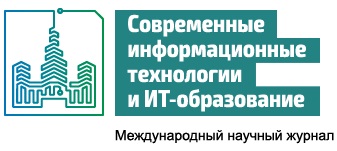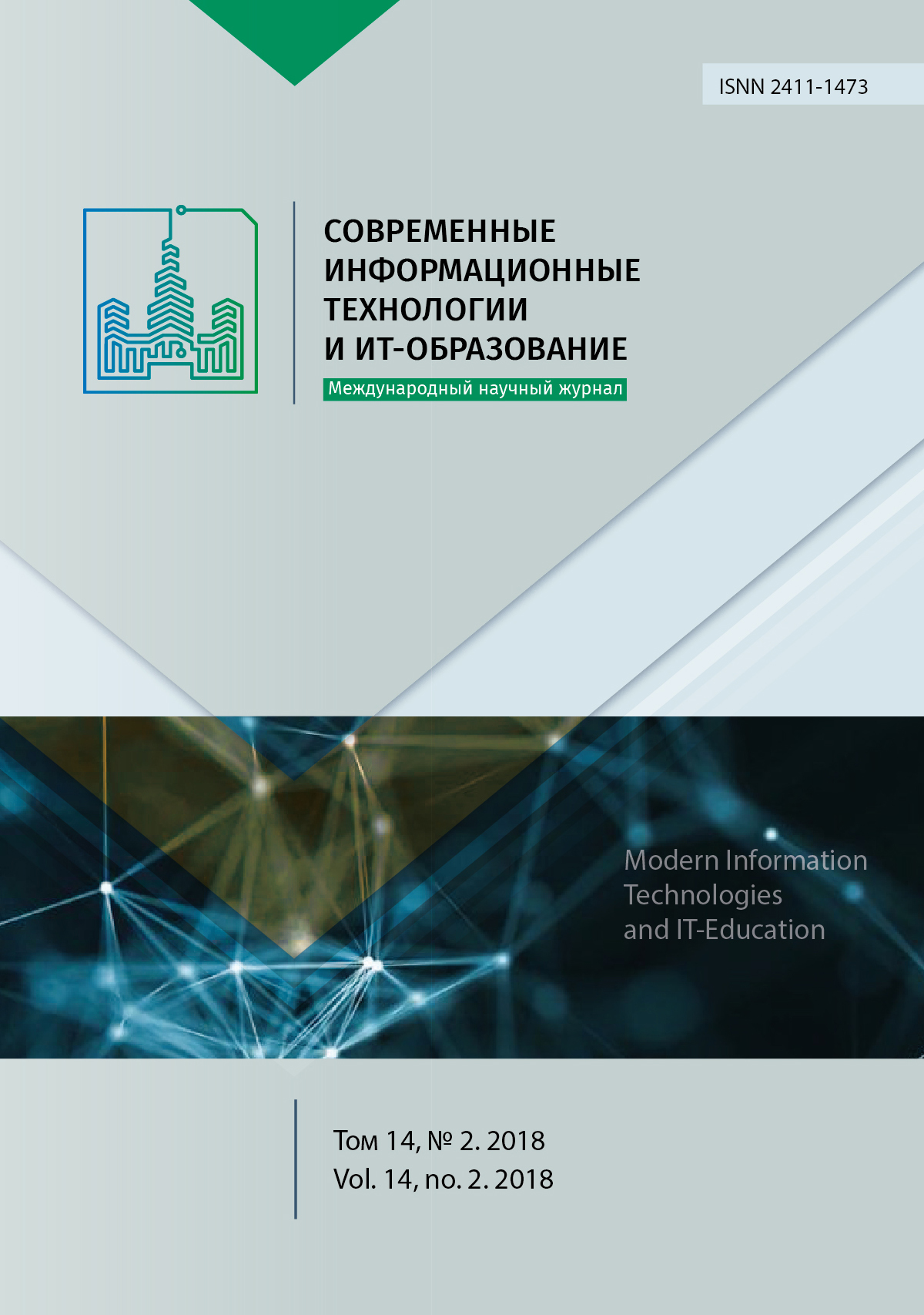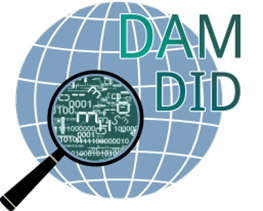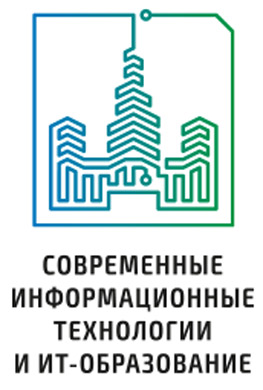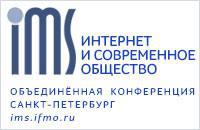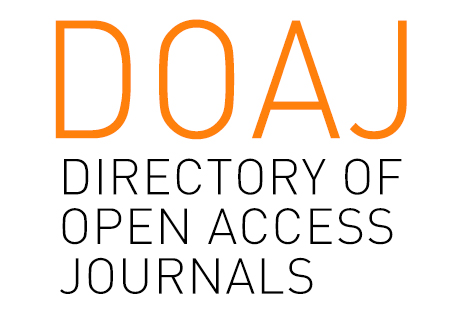SOLUTION OF THE PROBLEM OF HIGH-PRECISION POSITIONING OF AUTOMOBILE TRANSPORT ON THE BASIS OF THE USE OF ELECTRONIC MAPS
Abstract
The solution of the problem of positioning of moving objects is now increasingly carried out using electronic maps, allowing approximating with high accuracy the trajectory of the object by a set of orthodromic trajectories. Such studies are typical for such applications as space exploration, marine science, point agriculture, geographic information systems and, especially, road transport, where the movement in most cases is carried out on well-known with high accuracy trajectories. Using the functional dependence of the navigation variables in the Greenwich (geocentric) coordinate system, which is widely used in modern navigation, this article provides an analytical solution to the navigation problem of transport objects moving along known trajectories approximated by orthodromic intervals. This solution makes it possible to improve the positioning accuracy of road transport, as well as provides a reduction in the hardware composition of the measuring complex of moving objects and computational costs for the implementation of the navigation algorithm. In order to illustrate the possibility of its practical application in this research, the numerical simulation of the positioning algorithm using noisy odometric and velocity measurements with their subsequent processing in a linear Kalman filter is carried out. The simulation results allow us to conclude that it is possible to provide high accuracy positioning of transport objects moving along known trajectories using the developed approach at computational cost, allowing the implementation of the proposed algorithm in real time due to the small dimension of used linear Kalman filter. Due to the functional dependence of the navigation variables existing on this trajectory in the article an analytical solution of the navigation problem of transport objects moving along known trajectories approximated by orthodromic intervals is obtained in the Greenwich (geocentric) coordinate system widely used in modern navigation. This solution makes it possible to improve the positioning accuracy of road transport, as well as provides a reduction in the hardware composition of the measuring complex of moving objects and computational costs for the implementation of the navigation algorithm. In order to illustrate the possibility of its practical application the numerical simulation of the positioning algorithm using noisy odometric and velocity measurements with their subsequent processing in a linear Kalman filter is carried out. The simulation results allow us to conclude that it is possible to provide high accuracy positioning of transport objects moving along known trajectories using the developed approach at computational cost, allowing the implementation of the proposed algorithm in real time due to the small dimension of used linear Kalman filter.
References
[2] Morozov V.N. Promising directions of introduction of satellite-based technologies. The Zheleznodorozhny Transport = Railway Transport. 2009; 9:16-17. Available at: https://elibrary.ru/item.asp?id=17781784 (accessed 20.04.2018). (In Russian)
[3] Anuchin N.O., Emeljancev G.I. Integrated orientation and navigation for the marine moving objects. SPb., 1999. 357 p. (In Russian)
[4] Boronahin A.M., Mochalov A.V., Rehel M., Shmajster J. Study of integrated navigation system in rail way. Pro-ceedings of the Conference "Integrated inertial-satellite navigation”. SPb.: Elektropribor, 2001. pр. 181-197. (In Russian)
[5] Golovan A.A., Parusnikov N.A. Mathematical foundations of navigation systems. Part I. Mathematical models of inertial navigation. M.: Maks Press, 2011. 132 p. (In Russian)
[6] Aleshin B.S., Afonin A.A., Veremeenko K.K., Koshelev B.V., etc. Orientation and navigation of mobile objects: modern information technologies. B.S. Alyoshin (Ed). M.: Physmathlit, 2006. 424 p. (In Russian)
[7] Lo S.C., Peterson B.B., Enge P.K. Proving the Integrity of the Weighted Sum Squared Error (WSSE) Loran Cycle Confidence Algorithm. Journal of The Institute of Navigation. 2007; 54(4):277-291.
[8] Schmidt G. INS/GPS Technology Trends. Draper Laboratory Report P-4036, Cambridge, MA, October 2002. 16 p.
[9] CHi TSian Nam Corrections of the without – platforms navigation systems. Avtomatizaciya. Covremennye tekhnologii. 2005; 3:19-21. (In Russian)
[10] Pupkov K.A., Neusypin K.A. Questions of the theory and implementation of control systems and navigation. М.: Bioinform, 1997. 368 p. 1. (In Russian)
[11] Chen C.L. A Systematic approach for solving the great circle track problems based on vector algebra. Polish Maritime Research. 2016; 2:3-13. DOI: 10.1515/pomr-2016-0014
[12] Chen C.L., Liu P.F., Gong W.T. A Simple Approach to Great Circle Sailing: The COFI Method. The Journal of Nav-igation. 2014; 67(3):403-418. DOI: 10.1017/S0373463313000751
[13] Tseng W.-K., Lee H.-S. Building the Latitude Equation of the Mid-longitude. The Journal of Navigation. 2007; 60(1):164-170. DOI: 10.1017/S0373463307224129
[14] Kifana B.D., Abdurohman M. Great Circle Distance Methode for Improving Operational Control System Based on GPS Tracking System. International Journal on Computer Science and Engineering. 2012; 4(4):647-662. Availa-ble at: http://www.enggjournals.com/ijcse/doc/IJCSE12-04-04-032.pdf (accessed 20.04.2018).
[15] Nastro V., Tancredi U. Great Circle Navigation with Vectorial Methods. The Journal of Navigation. 2010; 63(3):557-563. DOI: 10.1017/S0373463310000044
[16] Sokolov S.V. Analytical models of spatial trajectories for solving navigation problems. Journal of Applied Mathematics and Mechanics. 2015; 79(1):17-22. DOI: 10.1016/j.jappmathmech.2015.04.013
[17] Sokolov S.V. Synthesis of spatial trajectoriesof analytical models and their application to solving satellite navigation. Applied physics and mathematics. 2013; 1(2):3-12. Available at: https://elibrary.ru/item.asp?id=22739669 (accessed 20.04.2018). (In Russian)
[18] Asaturov S.M., Zelentsov V.M. The algorithms for determining the parameters of the aircraft traffic arameter esti-mation. Vestnik MGTU im. N.E. Baumana. Ser. Priborostroenie. 2005; 1(58):63-72. (In Russian)
[19] Kramarov S.O., Lukasiewicz V.I. Stochastic estimation of perturbed ephemeris navigation satellites on the basis of a generalized Kalman filter. University News. North-Caucasian Region. Technical Sciences Series. 2013; 6(175):15-18. (In Russian)
[20] Kramarov S.O., Lukasiewicz V.I. Joint estimation ephemeris navigation satellites and coordinates of the object based on the methods of stochastic filtering. Applied Physics and Mathematics. 2014; 2:13-19. (In Russian)
[21] Kramarov S.O., Lukasiewicz V.I. Synthesis of a stochastic model of strapdown system for moving object at great circle trajectory. Proceedings of the Conference «System problems of reliability, quality, computer modeling, cybernetic, information and telecommunication technology technologies in innovative projects” (Innovatika-2013). Ehnergoatmizdat, 2013. P. 138. (In Russian)
[22] Kramarov S.O., Lukasiewicz V.I., Stazharova L.N. A posteriori nonlinear estimation of parameters orientation of the dynamic object based on satellite measurements. Informatization and communication. 2014; 2:27-31. (In Rus-sian)
[23] Lukasiewicz V.I., Kramarov S.O., Sokolov S.V. Stochastic estimation of dynamically changing object orientation parameters using satellite measurements. Radioelectronics and Communications Systems. 2015; 58(4):166-173. (In Russian) DOI: 10.3103/S0735272715040044
[24] Lukasiewicz V.I., Kramarov S.O., Sokolov S.V. Algorithm of dynamical estimation of object orientation parame-ters from satellite measurements. Journal of Instrument Engineering. 2015; 58:1:17-23. Available at: http://pribor.ifmo.ru/file/article/11291.pdf (accessed 20.04.2018). (In Russian)
[25] Kramarov S.O., Sokolov S.V., Sokolov S.М., Taran V.N. Methods of analysis and synthesis system intelligently-adaptive control. M.: INFRA-M, 2016. 238 p. (In Russian)
[26] Sokolov S.V., Pogorelov V.A. Stochastic assessment, management and identification in high-precision navigation systems. M.: Physmathlit, 2016. 259 р. (In Russian)
[27] Sokolov S.V., Yugov Y.M. Integration of inertial-satellite navigation systems on the basis of the stochastic filter, invariant to object model. Aerospace Instrument-Making. 2013; 6:9-17. (In Russian)
[28] Scherban I.V., Sokolov S.V. Integration of satellite and inertial navigational systems on the basis of non linear fil-tering theory. Middle East Journal of Scientific Research. 2013; 18(2):275-282.
[29] Akperov I.G., Kamensky V.V., Kramarov S.O., Lukasiewicz V.I., Sokolov S.V., Tishchenko E.N. Sposob identif-ikacii parametrov navigacionnyh sputnikov [Method to identify the parameters of navigation satellites]. Patent RF, no. 2584541, 2016.
[30] Akperov I.G., Kamensky V.V., Kramarov S.O., Sokolov S.V., Lukasiewicz V.I., Tishchenko E.N. Sposob identif-ikacii parametrov navigacionnyh sputnikov [Method to identify the parameters of navigation satellites]. Patent RF, no. 2587666, 2016.
[31] GLONASS. Principles of construction and operations. A.I. Perov, V.N. Harisov (Eds). M.: Radio, 2010. 800 p. (In Russian)
[32] Gradshtejn I.S., Ryzhik I.M. Tables of integrals, sums, series, and works. M.: Fizmatgis, 1963. 1100 p. (In Russian)

This work is licensed under a Creative Commons Attribution 4.0 International License.
Publication policy of the journal is based on traditional ethical principles of the Russian scientific periodicals and is built in terms of ethical norms of editors and publishers work stated in Code of Conduct and Best Practice Guidelines for Journal Editors and Code of Conduct for Journal Publishers, developed by the Committee on Publication Ethics (COPE). In the course of publishing editorial board of the journal is led by international rules for copyright protection, statutory regulations of the Russian Federation as well as international standards of publishing.
Authors publishing articles in this journal agree to the following: They retain copyright and grant the journal right of first publication of the work, which is automatically licensed under the Creative Commons Attribution License (CC BY license). Users can use, reuse and build upon the material published in this journal provided that such uses are fully attributed.
